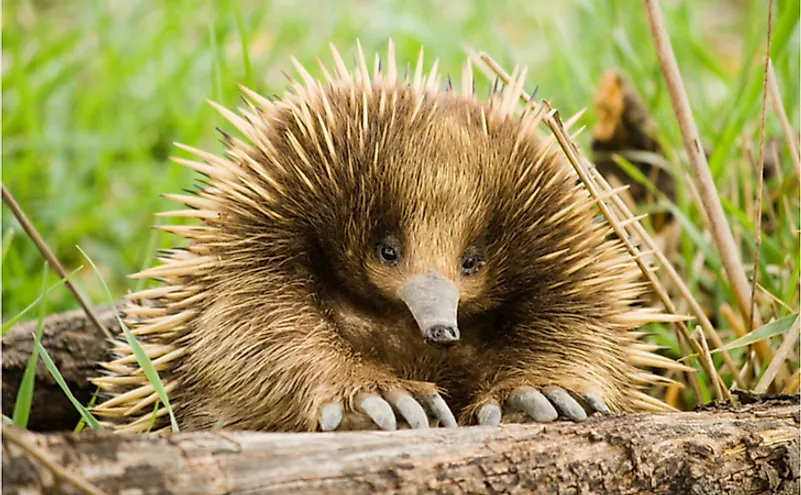The Four Species Of Echidnas Living Today

Echidnas are egg-laying mammals (Monotremes), also referred to as spiny anteaters, and they are mainly found in Australia and New Guinea, among other regions. They are believed to have evolved some 20 million to 50 million years ago, and their ancestor was an aquatic creature, but echidnas were able to adapt to non-aquatic life. Platypus and echidnas are the only mammals that lay eggs. Today, there are only four extant species of echidna, and they include western long-beaked echidna, Sir David's long-beaked echidna, eastern long-beaked echidna, and short-beaked echidna.
Western Long-beaked Echidna
Zaglossus bruijnii is one of the four living echidnas that feed on earthworms, which contrast with the short-beaked echidna that feeds on termites and ants. It is also relatively larger compared to the species of short-beaked echidna. It weighs an average of 36lbs, making it the largest monotreme. It is found in parts of Papua and Indonesia at elevations reaching between 4,300 feet and 13,100 feet. The species prefers montane forests and alpine meadow regions. It has been listed as critically endangered, and its population has reduced significantly as a result of hunting and habitat loss.
Sir David's Long-beaked Echidna
Zaglossus attenboroughi refers to the species of echidna found mainly in New Guinea. The species was named after the famous naturalist David Attenborough. It lives in the Cyclops Mountains. It is almost the same size as the short-beaked echidna. The males are typically larger than the females. They weigh an average of between 11 lbs and 22 lbs. Sir David's long-beaked echidnas are solitary and nocturnal animals. Whenever they are threatened, they roll into a spiny ball in the same way hedgehogs do.
Eastern Long-beaked Echidna
Zaglossus bartoni is found mainly in New Guinea in regions with elevations of between 6,600 feet and 9,800 feet above sea level. This species is easily identified from other species because it has four claws on the forefeet and five on the hind feet. It has an average weight ranging from 11 lbs to 22 lbs and a body length of between 24 inches and 39 inches. They have dense black fur, and they lack a tail. The females are relatively larger than the males, and they can live up to 30 years.
Short-beaked Echidna
Tachyglossus aculeatus have a specialized tongue and a distinctive snout which they use to catch insects. They have strong forelimbs and claws, which are adapted to digging their barrows. These species can tolerate high levels of carbon dioxide or survive in low levels of oxygen, an adaptation, which is suitable to survive underground. When they are threatened, they curl into a ball and deter a predator with spines. The short-beaked echidnas are native to Australia and both the coastal and highland regions of New Guinea. Although the short-beaked echidnas are not threatened, human activities such as habitat destruction, hunting, and the introduction of new predatory species, as well as parasites, have reduced their numbers.
The Spines Of The Echidnas
The echidnas have spines, which are hair modifications. Their bodies are covered with about two-inch long spines, and only the legs, faces, and underside lack spines. They also have fur between the spines that provide insulation.











